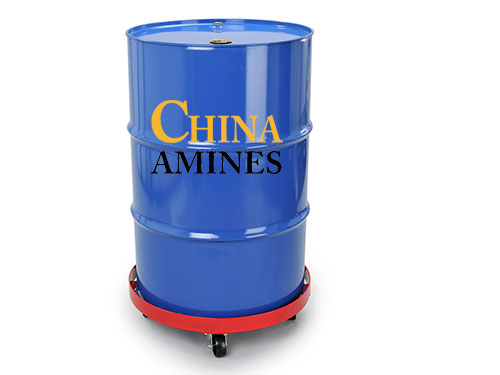1. Chemical Structure and Properties
Molecular Formula:
Dodecyl dimethylamine: C₁₄H₃₁N
Tetradecyl dimethylamine: C₁₆H₃₅N
Commercial DMA1214 is typically a C12-C14 alkyl chain mixture.
Structural Formula:
CH₃(CH₂)₁₀-₁₂CH₂-N(CH₃)₂
Physical Properties:
Appearance: Clear, colorless to pale yellow liquid.
Boiling Point: ~250–280°C (depending on alkyl chain distribution).
Density: ~0.80–0.82 g/cm³.
Solubility: Insoluble in water; soluble in organic solvents (e.g., ethanol, hexane).
Chemical Properties:
Weak base (pKa ~10.2), reacts with acids to form quaternary ammonium salts.
Hydrophobic alkyl chains enable surfactant behavior, critical for micelle formation.
2. Industrial Applications
Surfactant Production: Precursor for cationic surfactants (e.g., dodecyl dimethyl benzyl ammonium chloride). Applications include fabric softeners, antistatic agents, and disinfectants.
Personal Care Products: Found in hair conditioners and skin creams as emulsifiers and conditioning agents. Example: Reduces frizz by forming a cationic layer on hair cuticles.
Oilfield Chemicals: Used as corrosion inhibitors and demulsifiers in crude oil processing.
Agriculture: Intermediate for herbicides and pesticide emulsifiers.
3. Safety and Toxicology
Health Hazards: Causes skin and eye irritation; prolonged exposure may lead to dermatitis. Vapors may irritate the respiratory tract. Low acute oral toxicity but may cause gastrointestinal discomfort.
Environmental Toxicity: Toxic to aquatic organisms (EC50 for algae: ~1–5 mg/L). Degrades slowly under anaerobic conditions.
Protective Measures: Use nitrile gloves, goggles, and ensure good ventilation. In case of spills, absorb with inert material and treat as hazardous waste.
4. Environmental and Regulatory Considerations
Biodegradability: Readily biodegradable (>60% in 28 days, OECD 301D), but quaternary metabolites may persist in the environment.
Regulatory Compliance:
EU: REACH-registered; restricted under Annex XVII for persistent surfactants.
USA: Listed under TSCA; subject to EPA labeling for aquatic hazards.
China: Included in IECSC (Inventory of Existing Chemical Substances).
Transportation: Not classified as hazardous under UN GHS but requires ecological hazard labeling.
5. Case Studies: Application Insights
Fabric Softener Formulation: DMA1214 reacts with fatty acids (e.g., stearic acid) to form esterquats, which are key softening agents. In Procter & Gamble’s Downy® products, DMA1214-based surfactants reduce static cling by up to 80%. Used at concentrations of 5–15%.
Oilfield Demulsifiers: Saudi Aramco employs DMA1214 derivatives to break crude oil emulsions, achieving a 90% reduction in emulsion stability at 50 ppm dosage.
Comparison with Alternatives: DMA1214 provides superior hydrophobicity for demanding applications. Coco-based dimethylamines (C8–10) are more biodegradable but less effective in hard water environments.


